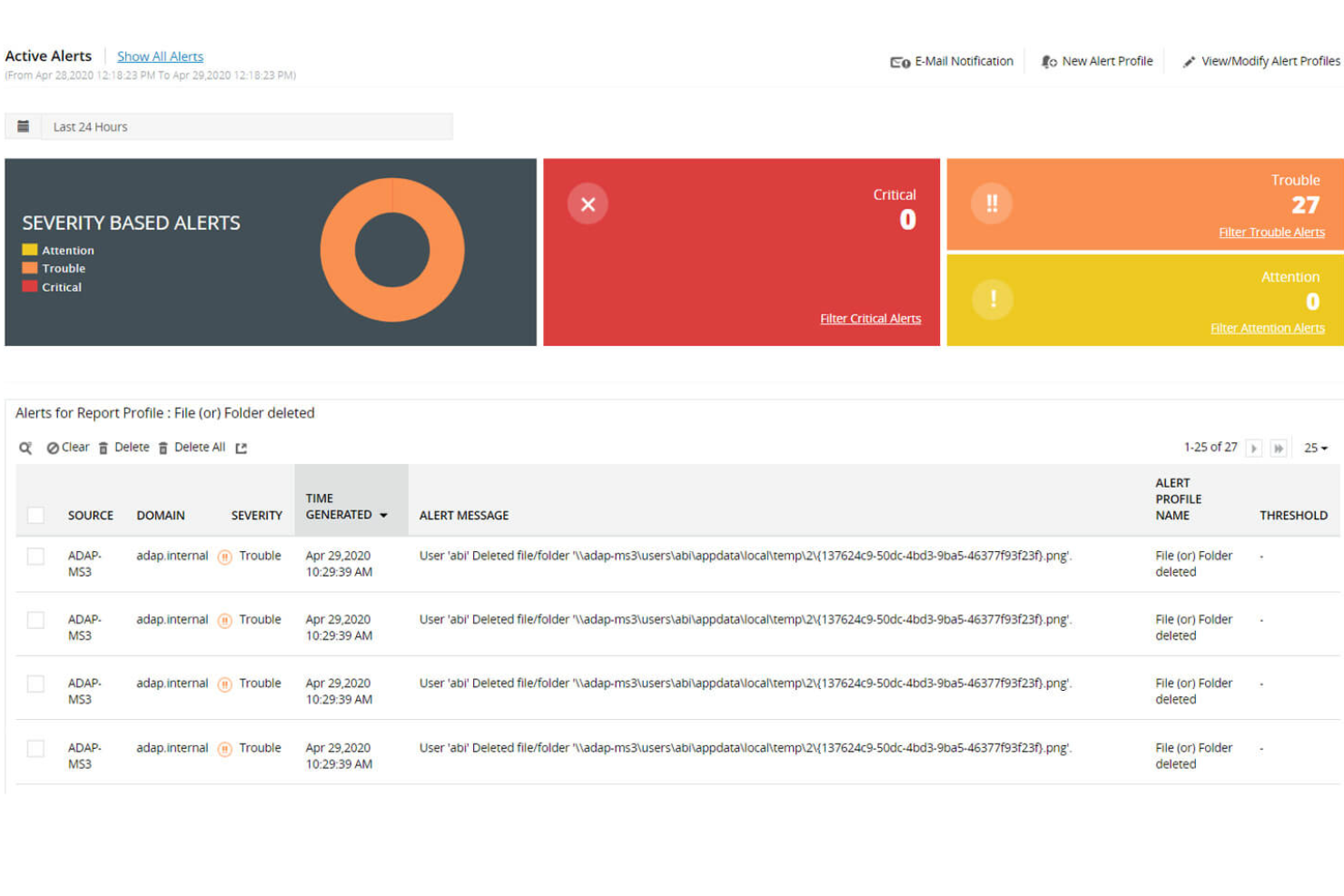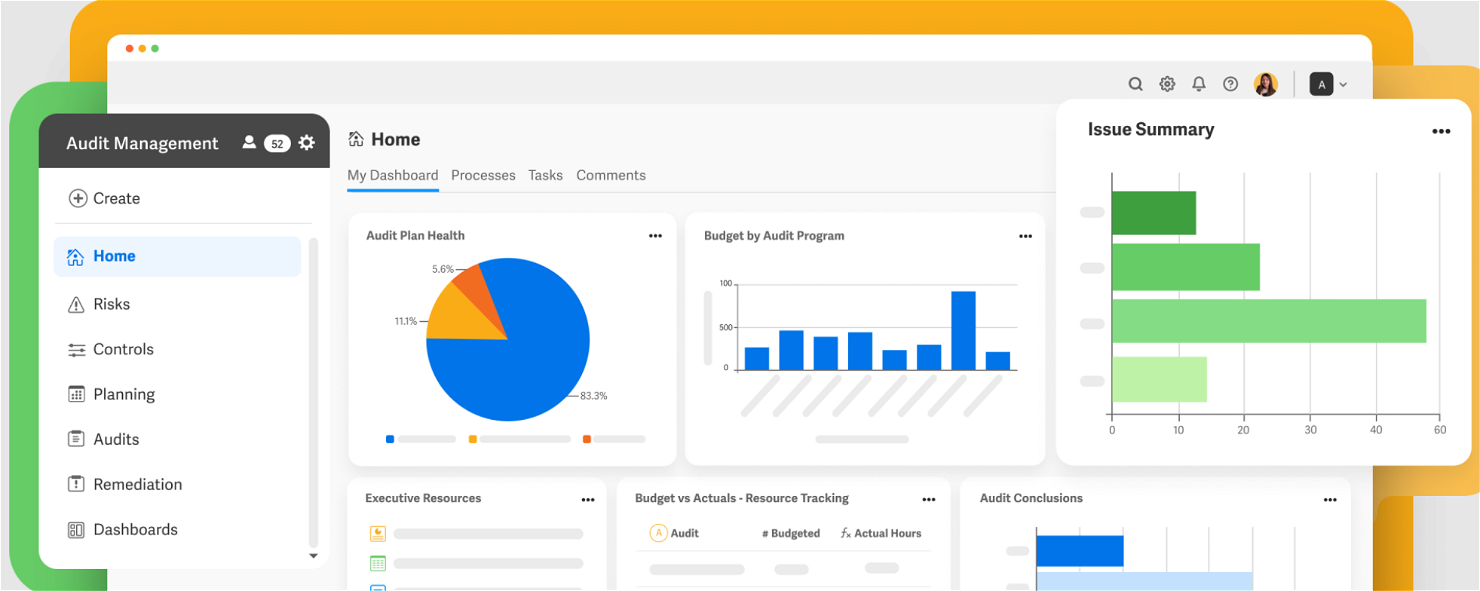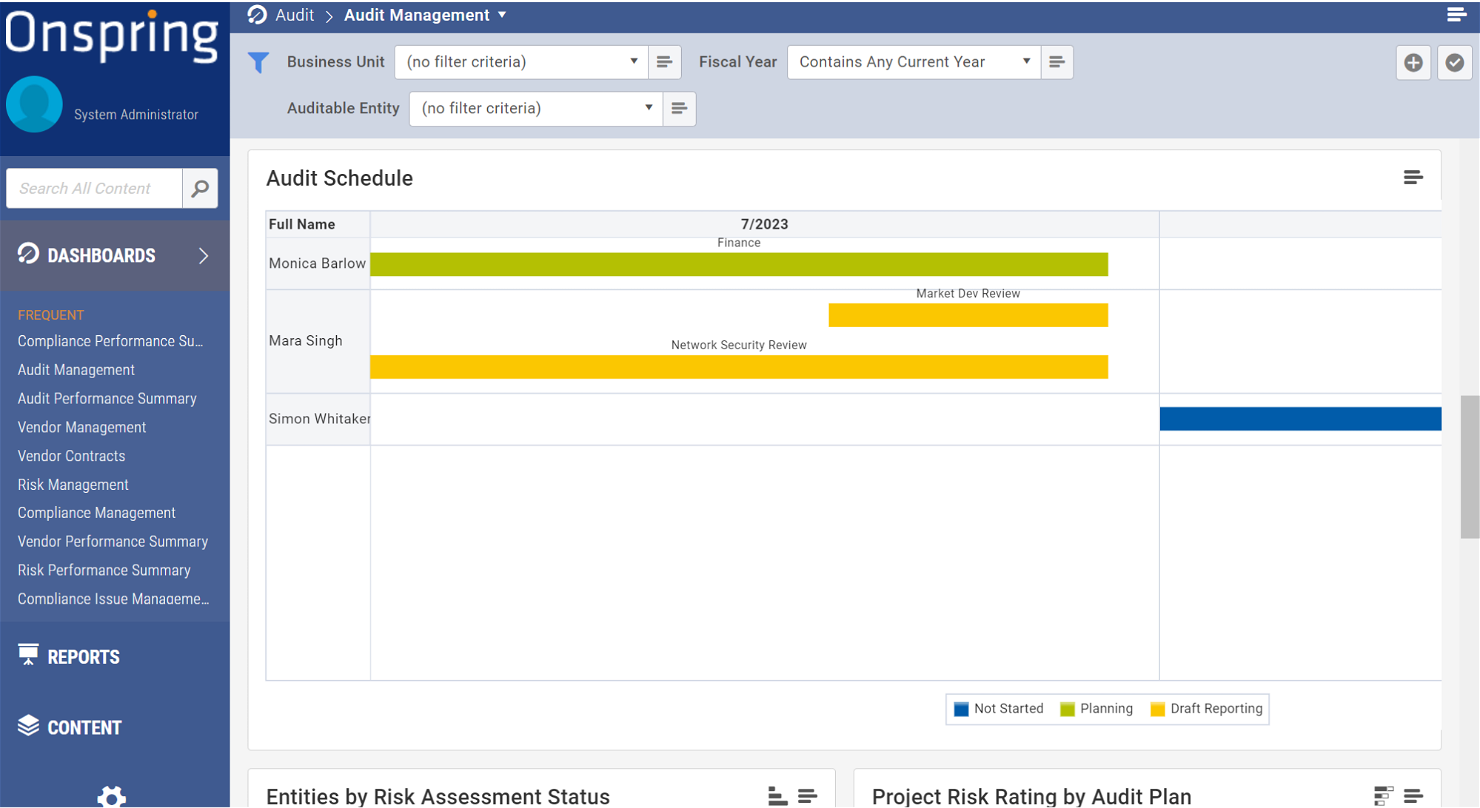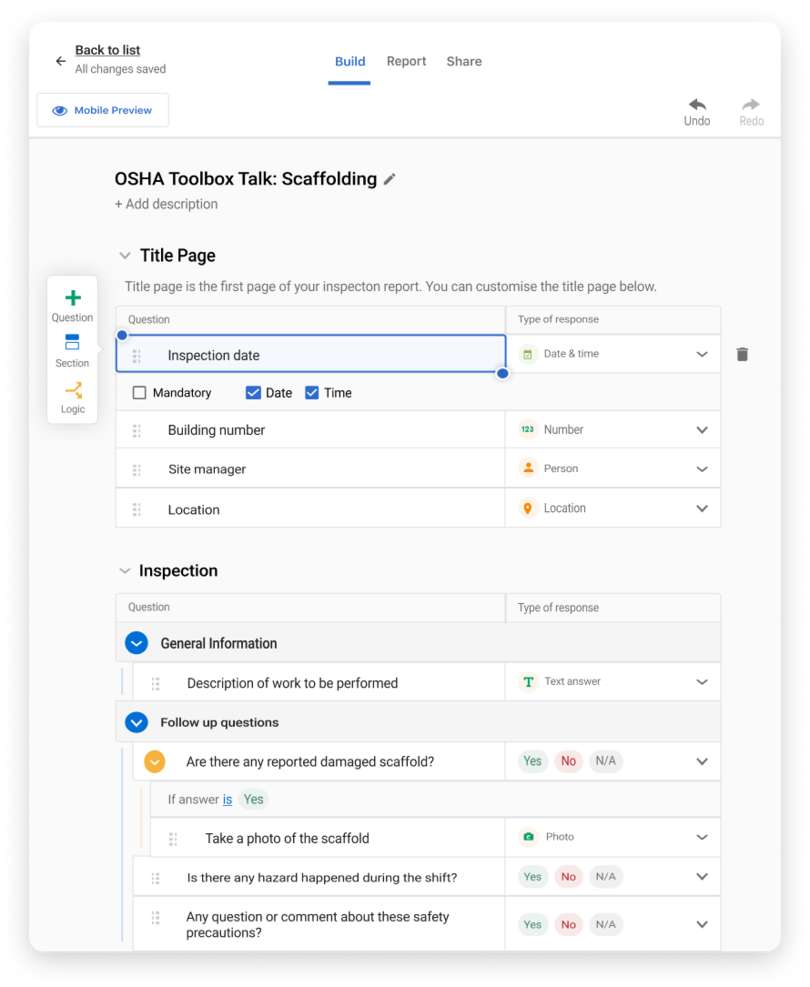10 Best Audit Management Software Providers Shortlist
Here's my pick of the 10 best software from the 19 tools reviewed.
Our one-on-one guidance will help you find the perfect fit.
With so many different auditing tools available, figuring out which is right for you is tough. You know you want to improve audit efficiency, enhance collaboration among audit teams, have better visibility into audit processes, and increase accuracy in audit documentation but need to figure out which tool is best. I've got you! In this post I'll help make your choice easy, sharing the findings from my extensive research and my exposure to different tools, with my picks of the best audit management software.
What is Audit Management Software?
Audit management software is a tool used to plan, execute, and track audits within an organization. Key features like audit planning, risk assessment, document management, workflow automation, issue tracking, and reporting make it easy to manage audit schedules, assess risks, document findings, and generate reports, contributing to a systematic and organized audit process.
Overall, audit management software helps organizations efficiently manage audit tasks, track progress, and ensure compliance with audit requirements and standards.
Overview Of The Best Audit Management Software
These are the best auditing software options on the market, based on a combination of functionality, user-friendliness, value, and ease of integration with existing systems.
Hyperproof is a compliance operations platform that helps users automate workflows, prepare for audits, and manage risks. It provides tools for risk management, vendor management, and audit management and offers features like mapping controls to compliance requirements, automating evidence collection, and monitoring compliance posture.
Why I picked Hyperpoof: I chose Hyperproof because it supports over 100 compliance frameworks, including SOC 2, ISO 27001, GDPR, and HIPAA, and offers a centralized platform for tracking and managing all necessary compliance tasks and documentation to help with audit readiness.
Hyperproof Standout Features and Integrations:
Standout features include real-time compliance visibility that offers continuous monitoring and updates, keeping audit teams informed about their compliance status at all times.
Additionally, the platform provides tools to collect, prioritize, track, and mitigate risks. It includes a risk register, issues management, and reporting features.
Integrations include Jira, Slack, Microsoft Teams, Okta, OneDrive, Google Drive, AWS, Azure, GitHub, GitLab, Confluence, ServiceNow, Microsoft 365, Zoom, Box, Dropbox, Asana, Trello, Salesforce, and Smartsheet.
Pros and cons
Pros:
- Intuitive UI design
- Pre-built frameworks for compliance management
- Automates evidence collection to save time during audits
Cons:
- Limits to customization on the platform
- Reporting limitations
ManageEngine ADAudit Plus is a comprehensive Active Directory auditing tool designed to help organizations monitor changes and activities within their Windows ecosystem. It offers real-time auditing and alerting for Active Directory, Azure AD, file servers, Windows servers, and workstations.
Why I picked ManageEngine ADAudit Plus: I like that it provides real-time Active Directory auditing and alerting, ensuring that any changes within the Windows environment are promptly detected and addressed. The tool's capability to track user logins, monitor file changes, and manage permissions is crucial for maintaining security and compliance. Furthermore, its user behavior analytics and suspicious activity alerts stand out in preventing potential security breaches and ensuring adherence to regulations such as GDPR and HIPAA.
ManageEngine ADAudit Plus Standout Features and Integrations:
Standout features include detailed file server auditing, tracking access and modifications to files and folders across Windows and NetApp environments. Its account lockout and management feature also helps in identifying and resolving account lockout issues efficiently.
ADAudit Plus also includes comprehensive group policy auditing and advanced auditing for workstations, capturing user logon and logoff activities, software installations, and changes to local users and groups.
Integrations include ManageEngine ServiceDesk Plus, ManageEngine OpManager, ManageEngine Log360, ManageEngine EventLog Analyzer, Microsoft SCOM, Microsoft Azure, VMware, Office 365, and SIEM solutions like Splunk, IBM QRadar, and ArcSight.
Pros and cons
Pros:
- Detailed insights into user behavior and system changes
- Reports can be customized to meet specific organizational needs.
- Offers compliance reporting to meet regulatory requirements
Cons:
- Limited support for non-Windows environments
- May be too complex for very small businesses with limited IT resources
Netwrix Auditor is an IT auditing software designed to help detect security threats, ensure compliance, and assist IT teams in maintaining stable deployments. It has a simple, straight-forward interface that should be easy for most people to learn how to use.
Why I picked Netwrix: I selected Netwrix Auditor for its focus on IT security, threat analysis, and IT auditing.
Netwrix Standout Features and Integrations:
Standout features include unified and centralized data collection and auditing of many common IT systems (Azure, Microsoft 365, etc.) to reduce the time needed to compile data from different sources.
I also like the predefined reports mapped out to comply with industry standards and legal regulations (GDPR, HIPAA, CJIS, etc.)
Integrations include SharePoint, Microsoft 365, Azure AD, Oracle Database, and SQL Server.
Pros and cons
Pros:
- Anomalous activity alerts
- Identifies threat patterns and potential breach
- Tech regulation compliance support
Cons:
- Specifically designed for IT audits
Workiva is a connected risk management, financial reporting, auditing, and ESG platform for large companies. It helps connect teams throughout the organization to improve collaboration and efficiency while aligning day-to-day projects with broader organizational goals.
Why I picked Workiva: I selected Workiva because of its collaboration features and user-friendliness, both of which combine to make this tool a good option for collaborating internally, and communicating with external auditors or regulators.
Workiva Standout Features and Integrations:
Standout features include centralized collaboration and communication tools within the Workiva platform, plus auto-syncing data sourcing from all your connected platforms.
I also like how Workiva connects audit and risk management workflows directly to financial reporting. The software also makes it easy to set role-based permissions, which facilitates more secure sharing and collaboration.
Integrations include BlackLine, Oracle, Google Drive, Excel, SAP, Microsoft Dynamics, and Workday.
Pros and cons
Pros:
- Simple integrations with dozens of popular business tools
- Collaborative features
- Over 3,000 pre-built auditing templates
Cons:
- Overkill for small firms
MetricStream is a governance, risk, and compliance (GRC) software solution. Its connected product line offers tools for business GRC, internal audit management, ES GRC (environmental, social, and corporate GRC), and Cyber GRC workflows.
Why I picked MetricStream: I selected MetricStream because in addition to being an audit management tool, it also covers various components of governance, compliance, and risk management across both business operations and IT.
MetricStream Standout Features and Integrations:
Standout features include AI-enabled auditing features, which allows MetricStream to select random samples for testing, automatically reconcile general ledger accounts, and verify the mathematical accuracy of financial statement line items, totals, and subtotals.
Aside from the sharp-looking dashboards, I also like MetricStream’s audit reporting tools and templates, which make it easy to share findings with stakeholders.
Integrations include threat and vulnerability scanners, regulatory compliance tools, and security tools via MetricStream APIs.
Pros and cons
Pros:
- Great reporting and dashboards
- Connected risk management, cyber security, internal auditing
- Relatively simple to use
Cons:
- Limited integrations
Diligent is an integrated GRC platform that has functionality across governance, risk management, compliance, ESG, and audit. It’s flexible and offers a centralized source of truth organization-wide.
Why I picked Diligent: I selected Diligent because of its advanced internal controls management features. The software is equipped with in-built communications and reporting tools to make it easy to keep executives and stakeholders informed.
Diligent Standout Features and Integrations:
Standout features include integrated ACL analytics to help teams comb through large data sets, and simple third-party integrations, which helps to enable Diligent as a single, organization-wide source of truth.
I also like Diligent’s automated controls testing and reporting features that help teams identify control gaps and high risk areas.
Integrations include SAP, Salesforce, Concur, Azure, and NetSuite.
Pros and cons
Pros:
- Substantial automation features
- Simple third-party integrations
- Excellent internal controls management and data analytics features
Cons:
- Steep learning curve
Onspring Internal Audit is an auditing software with process automation tools and real-time analytics. It’s best used by internal auditors and audit consultants.
Why I picked Onspring: I selected Onspring because it has automation features that can help teams track findings, review notes, and audit tasks, making it well-suited for high volume audits.
Onspring Standout Features and Integrations:
Standout features include automated audit trail building plus excellent audit planning tools to allocate resources accordingly. Onspring’s repeatable workflows, custom templating, and automated reporting can significantly reduce the time auditors spend on the more mundane, repetitive audit procedures.
I also appreciate Onspring’s survey functionality which can be used both internally and externally.
Integrations include Slack, Jira, Google Drive, Ascent, and RapidRatings.
Pros and cons
Pros:
- Native and third-party integrations
- Audit planning, scheduling, and staffing tools
- Advanced automations
Cons:
- Overkill for smaller audit teams
AuditBoard is an integrated internal auditing, risk management, ESG, and compliance software. It combines a diverse feature set with solid ease of use, and the versatility of its built-in tools make it a solid choice for all business sizes and industries.
Why I picked AuditBoard: I selected AuditBoard because it excels in operational auditing. The software includes tools to help firms plan and scope internal audits to ensure compliance and align internal processes and standards with broader goals and objectives. With that said, AuditBoard’s features are diverse enough to be used for all types of internal auditing and risk management processes.
AuditBoard Standout Features and Integrations:
Standout features include built-in collaboration and communication features to help keep teams aligned, plus automation features to streamline audit, risk, ESG, and governance workflows.
I also really like AuditBoard’s templating features. The OpsAudit template functionality allows you to create simple templates for recurring audit programs rather than creating entire new sets of planned audit procedures and fieldwork testing from scratch every year — saving time and maintaining audit quality.
Integrations include Slack, Microsoft Office 365, Google Drive, AWS, and Lucidchart.
Pros and cons
Pros:
- Built-in collaboration and automation tools
- Audit program templates
- Diversified feature set for risk, audit, ESG, and compliance
Cons:
- May be too costly for small firms
SafetyCulture is a safety and compliance management software designed with worker safety in mind.
The paid plan includes two different kinds of “seats”—the full seats have access to all the features, including management and inspections, but free seats are still able to create and complete tasks and send messages.
Why I picked SafetyCulture: I selected SafetyCulture because it’s specifically focused on worker safety and ensuring compliance with OSHA and other regulations.
SafetyCulture Standout Features and Integrations:
Standout features include easy checklists for employees to complete before and during fieldwork.
I really like how employees can use the mobile app to take and upload pictures, assign tasks to others (even non-SafetyCulture users), and check in with supervisors.
Integrations include Google and Microsoft suite products, Salesforce, SAP, and Zapier.
Pros and cons
Pros:
- Very affordable
- Encourages a workplace culture of safety and policy compliance
- Mobile-first design is very user-friendly
Cons:
- Not a standalone internal audit software
- Less about auditing and more about worker safety
Pentana Audit by Ideagen is an auditing software with a diverse feature set that covers both internal and external auditing functions.
Why I picked Pentana Audit: I selected Pentana Audit because it has substantial audit planning and process mapping capabilities. For large audit teams or teams assigned to audit diversified and high-risk business operations, efficient planning is vital.
Pentana Audit Standout Features and Integrations:
Standout features include real-time updates and reporting features to keep stakeholders informed. Pentana’s live data dashboards show a numerical risk score for identified risks based on their potential impact and likelihood; which can be configured to send automatic email updates to stakeholders if scores change.
I also like that Pentana’s support team is staffed with experts who actually understand internal auditing standards and not just the software itself.
Integrations include custom integrations via Pentana APIs.
Pros and cons
Pros:
- Designed by internal auditors
- Knowledgeable customer support team with audit experience
- Solid audit planning workflows
Cons:
- Simplistic data visualizations
- Limited integrations
| Tools | Price | |
|---|---|---|
| Hyperproof | Pricing upon request | Website |
| ManageEngine ADAudit Plus | Pricing upon request | Website |
| Netwrix Auditor | Pricing upon request | Website |
| Workiva | Available upon request | Website |
| MetricStream | Pricing upon request | Website |
| Diligent | Pricing upon request | Website |
| Onspring | Pricing upon request | Website |
| AuditBoard | Pricing upon request. | Website |
| SafetyCulture | From $24/user/month | Website |
| Ideagen Pentana Audit | Pricing upon request | Website |

Compare Software Specs Side by Side
Use our comparison chart to review and evaluate software specs side-by-side.
Compare SoftwareOther Internal Audit Management Software Options
These alternative audit management tools may be worth considering for your firm:
Selection Criteria for Audit Management Software
To narrow down the list of the best audit management solutions, I focused on these primary criteria:
Core Functionality
At its core, audit management software should enable your organization to:
- monitor accounting and bookkeeping activity
- analyze financial statements
- view user permissions and access rights
- assess organizational risks
- identify mitigating controls
- develop audit plans
- design testing procedures
- map internal control environment
- flag rare and unusual financial transactions
- recommend corrective actions
- summarize and report audit findings and issues
- recommend corrective actions
- monitor the progress of recommendations
Key Features
Beyond a software’s core functionality, these are some key features that I looked for in selecting the best audit management software:
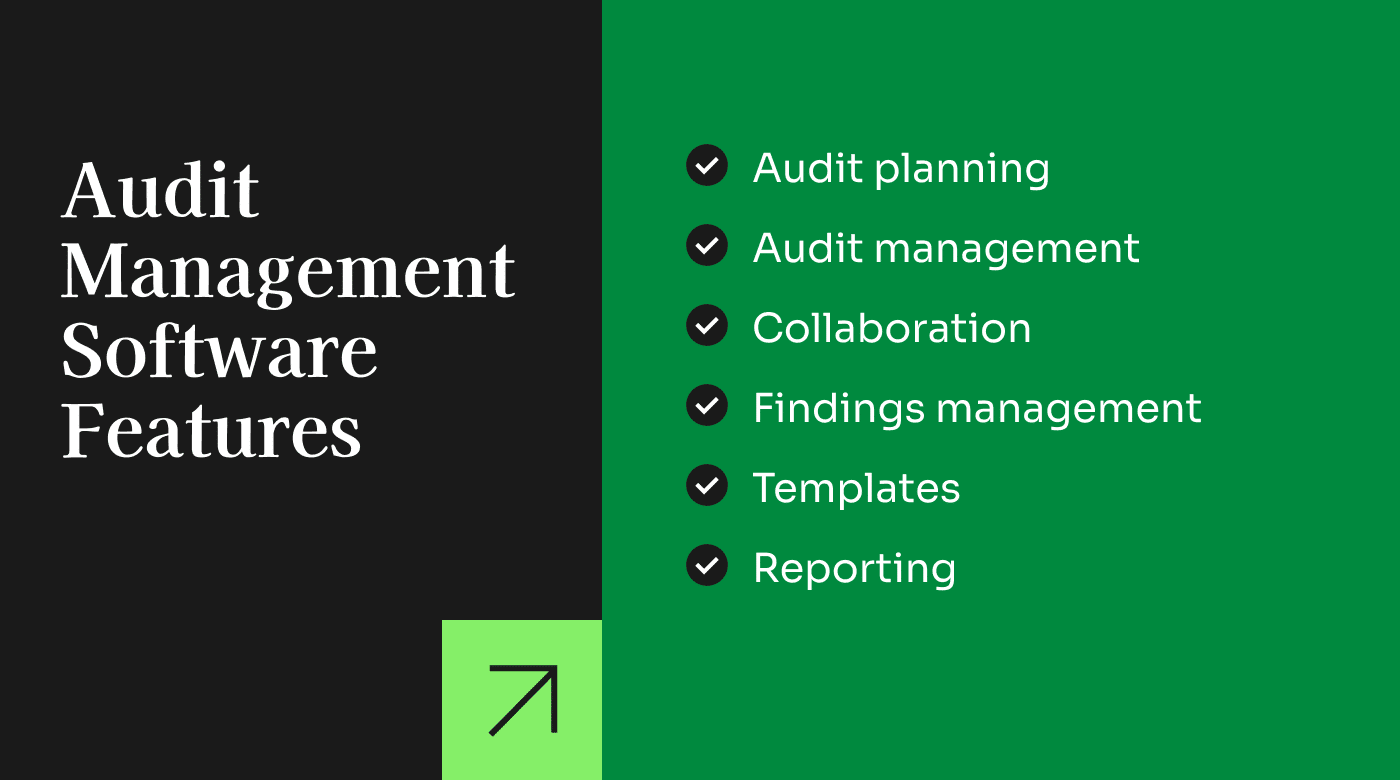
- Audit program builder: To save time, audit management software should include pre-built templates—or at least the ability to make templates out of existing audits for use in future audit cycles.
- Predictive analytics: Software should help audit teams perform predictive analytical procedures during the audit planning phase, to identify high-risk areas and unusual variances in financial statement line items.
- Internal control testing: Audit teams need tools that can help them evaluate the design and implementation of a company’s internal control systems. They also need to be able to evaluate the operating effectiveness of those controls.
- Statistical sampling tools: Audit teams need to ensure samples selected for specific item testing are appropriate and representative of the total population.
- Communication tools: Audit management software should enable collaboration, both within audit teams and across the organization. It should also be compatible with collaboration (or at least accurate sharing) with external partners, such as third-party auditors or accountants.
- Reporting and monitoring capabilities: Auditing will uncover discrepancies and inefficiencies that should be addressed—and audit management software should be able to generate reports with detailed audit findings and recommended corrective actions. Audit management tools should also enable continuous monitoring and mitigation efforts.
- Data analysis: Audit management software needs to facilitate the audit team’s review and analysis of a company’s financial and accounting data.
Usability
A software’s usability is important, even for skilled teams. Usability encompasses the entire UI, but also a software’s versatility in being interacted with by a variety of users—both technical and non-technical.
It should also be noted that some software suites require extensive onboarding and training, sometimes even requiring external (paid) consultants for setup. I tried to pick software with efficient onboarding experiences, but some of these platforms are just so complex that they may require significant upfront time investment anyways.
Integrations
Finally, auditing software should integrate with some or all of the tools your firm already uses. At a minimum, this should include your financial data repository or accounting system—but integrations with enterprise resource planning software and day-to-day tools like Google Drive or Slack are also useful.
People Also Ask
Below you’ll find my answers to some common questions people have about audit management software.
What tools do internal auditors use?
Internal auditors typically use a combination of tools and software.
As is typical with most accounting and finance roles, internal audit teams rely heavily on spreadsheet programs like Microsoft Excel and Google Sheets. Even teams with access to the latest software will still use Excel for most quick calculations.
To a finance person, a spreadsheet isn’t just an audit tool, it’s practically a lifestyle. As an auditor, I know I used Excel more than any other program on my laptop.
Spreadsheets can’t scan other systems for unusual entries or perform internal control testing though, which is why teams need some form of audit management software.
How does audit management software assist internal auditing teams?
Audit management software provides a centralized place to plan, execute, and oversee the entire audit lifecycle. The best tools also utilize automation and machine learning to detect anomalies, implement rules-based prioritization, and test controls. Additionally, these software solutions can help to align internal audit processes with regulatory policy and corporate standards, improve organizational alignment, and encourage collaboration and data synchronization between audit and management teams.
How much does audit management software cost?
Audit management software can cost anywhere from a few hundred dollars a month to several thousand dollars per month.
Most software is priced based on the organization’s size, complexity, or number of users. But keep in mind, the number of users for audit software will not be the number of employees. Only members of your internal audit, risk management, or compliance team will use the software.
Some audit management tools may also have upfront onboarding costs.
What are the different focus areas of auditing software?
There are different audit types and compliance areas that auditing software might focus on. Some are designed primarily for financial auditing—digging into financial records and reporting to ensure the numbers reported in a company’s financial statements are free of material misstatements.
Others may be process-focused, allowing firms to conduct operational audits to uncover vulnerabilities or inefficiencies. For example, is a completed background check in every new hire’s employee file before their first day of work?
Still others may be focused on worker safety, HR/policy auditing, or external report and compliance auditing. These audits look at things like whether all emergency exits are free of obstructions, or all assembly line workers are wearing the proper safety equipment.
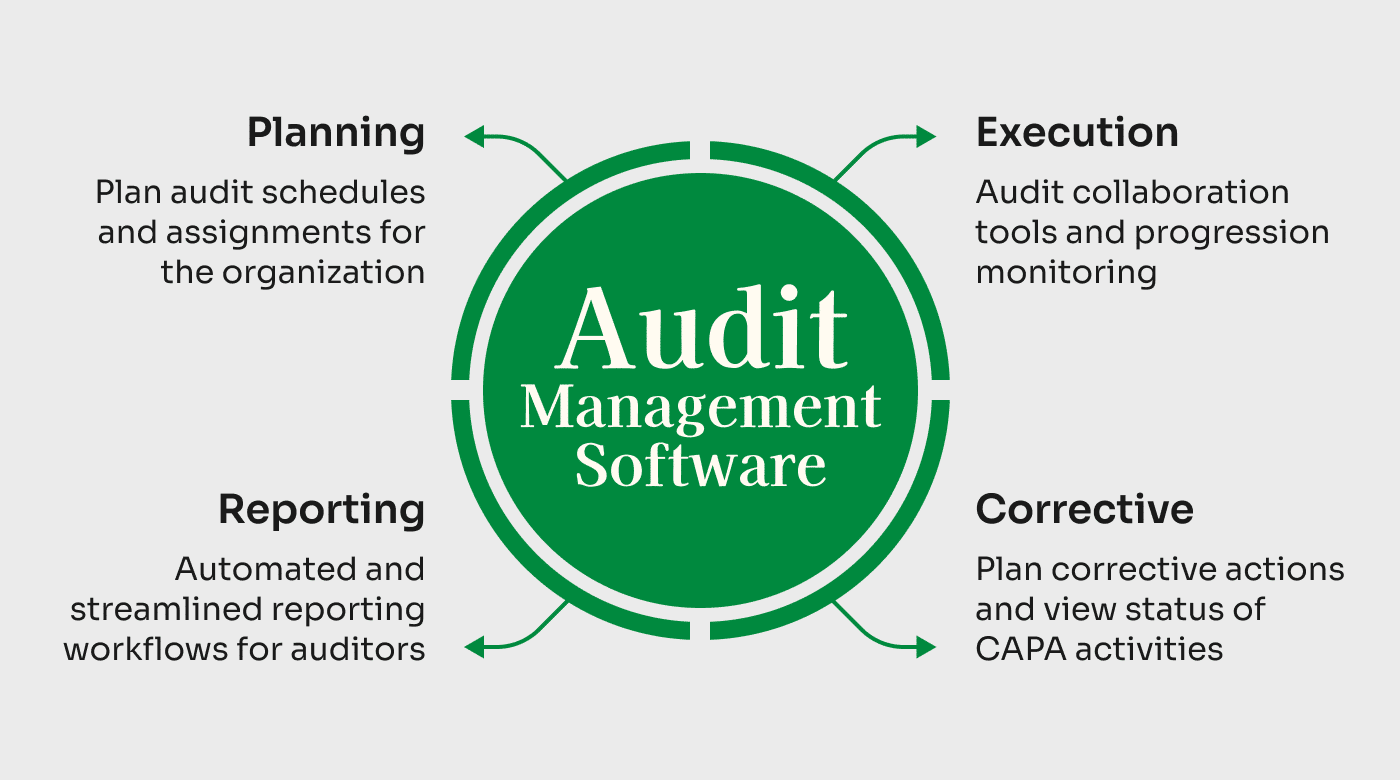
Whatever the focus area, good audit management software should help teams manage the audit process more effectively and efficiently. Audit management software is used in all phases of the audit lifecycle — from planning, fieldwork, and reporting, to making recommendations for appropriate corrective actions.
Summary
Audit management software can help internal teams audit processes relating to finance, operations, and compliance. The best audit management software options are listed above and can help teams manage audit planning, fieldwork, and reporting more effectively.
If you want to join us as we create a modern playbook for corporate finance, sign up for our weekly newsletter for the latest tech news, financial resources, and business insights from industry leaders.




